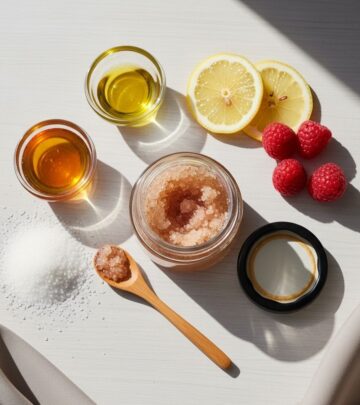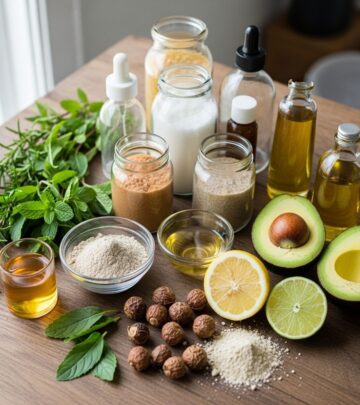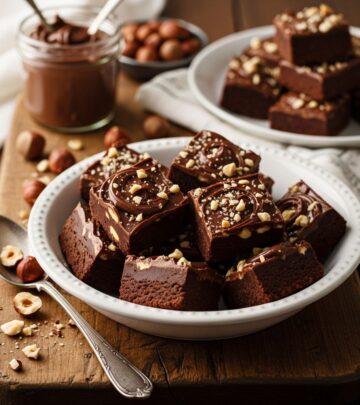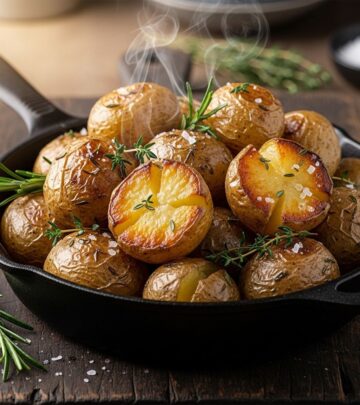Cheddar Cheese Sauce Recipe: Easy Homemade Sauce In 10 Minutes
Master the art of creating smooth, creamy cheese sauce from scratch in under 10 minutes

Image: HearthJunction Design Team
Easy Homemade Cheddar Cheese Sauce: A 10-Minute Recipe
There’s something truly magical about a smooth, creamy cheese sauce that can transform ordinary vegetables, pasta, or nachos into a delectable feast. While many home cooks default to store-bought options like Velveeta, making your own cheddar cheese sauce from scratch is surprisingly simple, healthier, and infinitely more delicious. This article will guide you through creating the perfect homemade cheddar cheese sauce in less than 10 minutes using basic ingredients you likely already have in your kitchen.
Why Make Homemade Cheese Sauce?
Before diving into the recipe, let’s understand why homemade cheese sauce is worth the (minimal) effort. Store-bought processed cheese products often contain preservatives, artificial flavors, and various additives. When you make cheese sauce at home, you control the ingredients, resulting in a cleaner, more natural product that tastes significantly better. Additionally, homemade sauce allows you to customize the flavor profile to suit your preferences—whether you prefer a sharper cheese flavor, want to add different seasonings, or need to adjust the consistency for specific applications.
The Science Behind Perfect Cheese Sauce
The foundation of a good cheese sauce is a classic béchamel—a mixture of fat (butter), flour, and milk. This combination creates what French cuisine calls a ‘roux,’ which serves as a thickening agent. Understanding the chemistry at work helps ensure success every time:
When flour is cooked in fat, the starch granules become coated, preventing them from clumping together when liquid is added. As the mixture heats, these starch molecules absorb the liquid and swell, creating a thick, smooth sauce. Adding cheese at the right temperature (ideally around 180°F) allows the proteins and fats in the cheese to incorporate smoothly without becoming stringy or grainy.
Essential Ingredients
Quality ingredients make all the difference in a simple recipe like cheese sauce. Here’s what you’ll need:
- Butter: 2 tablespoons unsalted butter provides the fat base for the roux. Using unsalted butter allows you better control over the final seasoning.
- All-purpose flour: 2 tablespoons work as the thickening agent when combined with butter to form a roux.
- Salt: ¼ teaspoon enhances flavors and balances the richness of the cheese.
- Whole milk: 1 cup adds creaminess and forms the liquid base of your sauce. The fat content in whole milk contributes to a silky texture.
- Sharp cheddar cheese: 1¾ cups of freshly shredded sharp cheddar cheese provides the distinctive flavor. Shredding your own cheese from a block rather than using pre-shredded varieties results in better melting, as pre-shredded cheese often contains anti-caking agents that can affect texture.
Step-by-Step Instructions
Now let’s break down the process into clear, manageable steps:
1. Create the Roux Base
Begin by melting 2 tablespoons of unsalted butter in a medium saucepan over medium heat. Once the butter has completely melted and starts to bubble slightly, add 2 tablespoons of all-purpose flour and ¼ teaspoon of salt. Whisk continuously until the mixture forms a smooth paste. This should take approximately 30 seconds to 1 minute.
The roux should have a pale yellow appearance and a slightly nutty aroma. Be careful not to brown the roux, as this will change the flavor profile of your final sauce. The texture should be smooth with no visible lumps of flour.
2. Incorporate the Milk
Gradually pour in 1 cup of whole milk while whisking constantly. This slow addition is crucial—adding all the milk at once can result in lumps that are difficult to remove. Continue cooking and stirring the mixture for about 2 minutes until it’s fully incorporated and begins to thicken slightly.
The sauce should have a smooth, velvety consistency at this stage. If it seems too thick, you can add a little more milk, one tablespoon at a time, until you reach your desired consistency.
3. Add the Cheese
Once your milk mixture is smooth and slightly thickened, add 1¾ cups of shredded sharp cheddar cheese. Some chefs prefer to remove the pan from heat before adding cheese to prevent overheating, which can cause the sauce to become grainy or stringy.
Stir continuously until all the cheese has melted completely and the sauce is smooth and creamy, approximately 1 to 2 minutes. The final texture should be glossy and pourable but thick enough to coat the back of a spoon.
Customizing Your Cheese Sauce
One of the greatest advantages of making homemade cheese sauce is the ability to customize it to your taste preferences or specific dishes. Here are some popular variations:
Alternative Cheese Options
While sharp cheddar provides a classic flavor, don’t be afraid to experiment with different cheeses or combinations:
- Mild cheddar: Creates a more subtle flavor, perfect for serving with delicate vegetables or for children’s palates.
- Gruyère: Adds a nutty, sophisticated flavor ideal for gourmet mac and cheese or gratins.
- Monterey Jack: Results in a creamy, meltable sauce with mild flavor, excellent for Mexican-inspired dishes.
- Blue cheese: Adding just a small amount (¼ cup) to your cheddar base creates a complex, tangy sauce perfect for drizzling over steak.
Flavor Enhancements
Elevate your basic cheese sauce with these additions:
- Spices: A pinch of cayenne pepper, smoked paprika, or mustard powder can transform the flavor profile.
- Fresh herbs: Stir in finely chopped chives, parsley, or thyme just before serving.
- Garlic: Add one minced garlic clove to the butter before creating your roux for a savory dimension.
- Worcestershire sauce: A few drops add depth and complexity.
Common Troubleshooting Tips
Even experienced cooks occasionally encounter issues when making cheese sauce. Here’s how to handle common problems:
Lumpy Sauce
If your sauce develops lumps, there are several potential fixes:
- Whisk vigorously to break up small lumps.
- For persistent lumps, strain the sauce through a fine-mesh sieve before adding cheese.
- Prevent lumps by ensuring your roux is smooth before adding milk and by adding milk gradually while whisking constantly.
Grainy or Separated Sauce
A grainy texture typically indicates that the proteins in the cheese have seized due to excessive heat. To fix or prevent this:
- Remove from heat immediately and add a splash of cold milk while whisking.
- Always add cheese off the heat or at a very low temperature.
- Use freshly grated cheese rather than pre-packaged shredded cheese.
Too Thick or Thin
Adjusting consistency is simple:
- Too thick? Add additional warm milk, one tablespoon at a time.
- Too thin? Either continue cooking to reduce further or create a small amount of additional roux in a separate pan and incorporate it into your sauce.
Serving Suggestions
This versatile cheese sauce pairs beautifully with countless dishes. Here are some popular serving ideas:
Classic Applications
- Macaroni and cheese: Toss with cooked pasta for the ultimate comfort food.
- Vegetable topping: Drizzle over steamed broccoli, cauliflower, or asparagus.
- Nachos: Pour over tortilla chips and add your favorite toppings.
- Baked potatoes: A delicious alternative to sour cream.
Creative Uses
- Cheese dip: Serve warm with bread cubes, pretzels, or vegetable crudités.
- Burger topping: Elevate your homemade burgers with a spoonful of cheese sauce.
- Casserole base: Use as a binding sauce in vegetable or pasta casseroles.
- Breakfast addition: Drizzle over scrambled eggs or breakfast burritos.
Storage and Reheating
If you’ve made more cheese sauce than needed, proper storage will maintain its quality:
Refrigeration
Transfer cooled cheese sauce to an airtight container and refrigerate for up to 3-4 days. The sauce will solidify when cold, which is completely normal.
Reheating Methods
To return the sauce to its smooth, pourable consistency:
- Stovetop: Place in a saucepan over low heat, whisking frequently until smooth. Add a splash of milk if needed to adjust consistency.
- Microwave: Heat in 30-second intervals at 50% power, stirring between each interval until warmed through and smooth.
Nutritional Considerations
While homemade cheese sauce is certainly more natural than processed alternatives, it’s still a rich food. Here’s how to make it fit into various dietary approaches:
Lighter Variations
- Substitute 2% or skim milk for whole milk (though the sauce won’t be quite as rich).
- Use reduced-fat cheese for part of the cheddar (mixing with regular cheese maintains better texture than using all reduced-fat).
- Incorporate puréed cauliflower into the sauce for added nutrients and reduced calories per serving.
Frequently Asked Questions (FAQs)
Q: Can I make this cheese sauce ahead of time?
A: Yes, you can prepare this sauce up to 3-4 days in advance and store it in an airtight container in the refrigerator. Reheat gently on the stovetop or in the microwave, adding a splash of milk if needed to restore the creamy consistency.
Q: Why is my cheese sauce grainy instead of smooth?
A: Graininess usually occurs when cheese is added to a sauce that’s too hot, causing the proteins to seize. To prevent this, remove the white sauce from heat before adding cheese, or ensure it’s only at a gentle simmer. Using freshly grated cheese rather than pre-packaged shredded cheese also helps, as the latter often contains anti-caking agents that can affect texture.
Q: Can I freeze cheese sauce?
A: While technically possible, freezing isn’t recommended as the sauce may separate and become grainy when thawed. If you must freeze it, do so in small portions and reheat very gently, whisking continuously to help restore its texture.
Q: How can I make my cheese sauce thicker?
A: For a thicker sauce, you can either (1) increase the flour-to-butter ratio in your initial roux, (2) add more cheese, or (3) continue simmering the sauce to reduce it further. Remember that the sauce will also thicken slightly as it cools.
Q: What’s the best cheese to use for a smooth sauce?
A: While sharp cheddar provides excellent flavor, cheeses with good melting properties include Monterey Jack, young Gouda, Gruyère, and American cheese. Avoid aged hard cheeses like Parmesan as the primary cheese, though they can be used in small amounts for flavor.
Conclusion
Mastering homemade cheddar cheese sauce is a game-changer for home cooks. This versatile kitchen staple elevates countless dishes, from humble vegetables to gourmet pasta creations. With just five simple ingredients and less than 10 minutes of your time, you can create a sauce that’s infinitely customizable, healthier than processed alternatives, and undeniably delicious. Once you’ve experienced the rich, complex flavor of freshly made cheese sauce, you’ll never want to return to the store-bought version again.
The beauty of this recipe lies not only in its simplicity but in its potential for endless variation. As you become comfortable with the basic technique, don’t hesitate to experiment with different cheese combinations, seasonings, and applications. Your culinary creativity is the only limit to what this foundational sauce can become.
References
- https://www.allrecipes.com/recipe/278141/homemade-cheddar-cheese-sauce/
- https://www.allrecipes.com/recipe/233481/cheese-sauce-for-broccoli-and-cauliflower/
- https://www.allrecipes.com/recipe/246530/real-nacho-cheese-sauce/
- https://www.allrecipes.com/recipe/273123/best-cheese-sauce/
- https://www.youtube.com/watch?v=yXu_1yBonnk
Read full bio of Srija Burman












